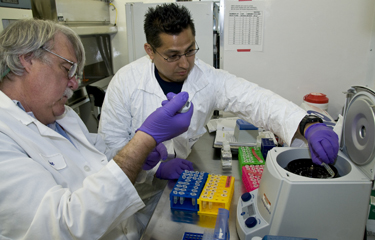Bumble Bee Foods’ recall on a specific SKU of canned clams in early July is part of a larger problem the U.S. Food and Drug Administration found in samplings of many different types of seafood.
Bumble Bee Foods issued a voluntary recall on one of its smoked clam products after the FDA testing found detectable levels of per- and polyfluoroalkyl substances (PFAS) chemicals in samples of its 3.75-ounce can of Bumble Bee Smoked Clams.
On 6 July, in a constituent update, the FDA said it found perfluorooctanoic acid (PFOA) in numerous samples of canned clams from China.
The FDA sampled 81 samples of clams, cod, crab, pollock, salmon, shrimp, tuna, and tilapia, most of which were imports. The sampling was conducted after previous testing of foods found PFAS in a few seafood samples, though at “relatively low levels.”
In its new survey, the FDA only found levels of PFAS that were of “likely health concern” in the canned clams. In addition to Bumble Bee, the FDA also tested samples of Reese, Polar, Crown Prince, Napoleon, Roland, and Geisha brands of canned clams. For the canned clam samples with the two highest levels of PFOA, from two distributors, there would be a potential health concern for consumers who eat more than approximately 10 ounces of the clams per month, except for young children, who should limit consumption to two ounces monthly, the FDA said in a constituent update.
The distributors with the two highest levels of PFOA committed to taking action to protect consumers. Bumble Bee recalled its product on 6 July and the second company "committed to, but has not yet initiated, a voluntary recall,” FDA said in a statement provided to SeafoodSource.
Since the second firm has not yet initiated a recall, the FDA is not naming the supplier, a spokesperson told SeafoodSource.
The FDA’s testing results surveyed a limited number of seafood samples at retail, a preliminary step to determine if a more targeted or larger seafood survey should be conducted.
“Research has shown that exposure to PFOA is associated with several serious health outcomes, including developmental effects, changes to liver function, reduced immune response, and increases in certain types of cancer,” the FDA said.
However, the levels of the other types of PFAS evaluated in the clams, as well as the PFAS evaluated for all other seafood samples, "are not likely to be a health concern,” the FDA said.
The agency is “working to determine the extent of PFOA in imported canned clams and PFAS in clams overall and taking action to ensure the continued safety of the U.S. food supply,” it added.
The FDA is “actively engaged” with all of the canned clam distributors that had products sampled to better understand potential sources of contamination, which could help the firms take action to reduce consumer exposure to PFOA from their products. The agency will also test imported clams and take action as appropriate, it said.
“In addition, the agency plans to conduct broader testing of canned and fresh clams, both imported and domestically harvested, to better understand PFAS levels to determine the best approach for protecting public health.”
Consumers should not be concerned about eating seafood overall, the FDA said.
“We reiterate our recommendation that you and your children eat a variety of age-appropriate healthy foods, including seafood. Seafood as a part of a healthy diet provides many nutritional benefits that for children include brain development and boosted immune system, and for adults, heart and bone health benefits, as well as help in reducing the risk of certain cancers,” the agency said.
Still, Americans who regularly eat or feed their children canned clams from China may want to reduce overall intake “until we have more information,” the FDA advised.
In its latest sampling, the FDA tested for certain types of PFAS that have been identified by scientific research as being more prevalent in seafood. “Additionally, other studies in the scientific literature on clams from China and Europe have reported a range of levels of PFOA, including elevated levels,” the agency said.
The widespread use of PFAS and their ability to remain intact in the environment means that, over time, PFAS levels from past and current uses can result in detectable levels of PFAS in food, the FDA said.
“The use of soil, water, or biosolids that are contaminated with PFAS to grow crops, feed animals intended for food, or raise fish or other seafood, can lead to PFAS entering the food supply,” it said. “Seafood may be contaminated with PFAS as a result of uptake from the water or sediment in which they are grown, through bioaccumulation via the food web, and/or through PFAS-contaminated feed for seafood raised via aquaculture.”
Photo courtesy of U.S. Food and Drug Administration







